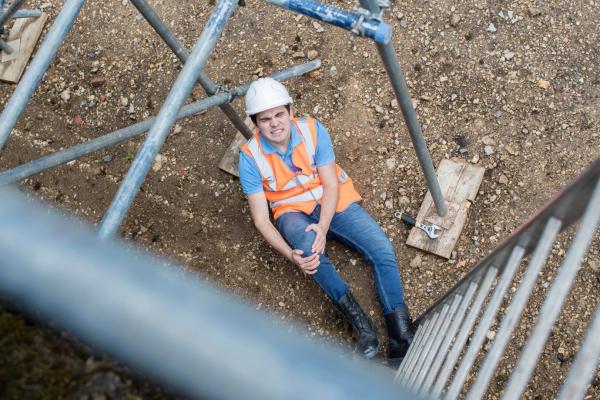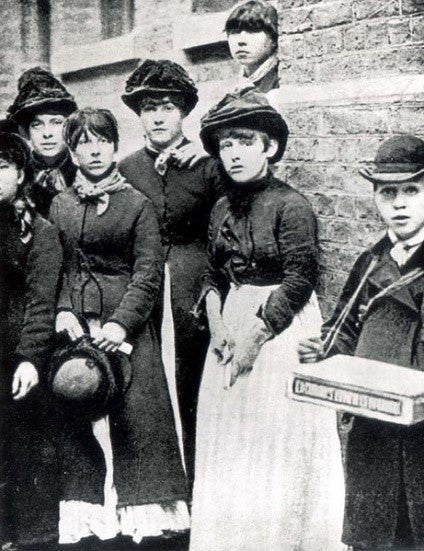The majority of us are lucky enough to work in safe and comfortable environments, and we often forget how dangerous workplaces of the past could be. Health and safety legislation of the last 100 years has been critical in making workplaces safer – helping to significantly reduce the number of at-work fatalities and injuries.
In this article we will be providing some answers to common health and safety questions, what employers are required to do and a brief look back into the history of health and safety.

When was the Health and Safety Act introduced?
1974.
The Health and Safety at Work Act 1974 is the primary legislation covering occupational health and safety in the UK and the Health and Safety Executive (HSE) are responsible for enforcing it.
Why was the Health and Safety at Work Act introduced?
The Health and Safety at Work Act was passed because existing laws on health and safety were out of date and did not cover works in environments other than offices, shops, railways and factories. It also thought some protection should be given to other people other than workers, such as the general public. To make health and safety everybody’s business.
What is workplace health and safety?
The law states that employers are responsible for protecting workers from ‘risks’ to their health and safety. The legislation which stipulates what is required is the Health and Safety at Work Act 1974.
Employers must protect workers (and the public, if they can access a workplace) from getting hurt or ill at or through work. If an employer doesn’t comply with the required legislation, local authorities may take action under criminal law or a person may claim compensation under civil law.
The law states that employers are responsible for protecting workers from ‘risks’ to their health and safety. The legislation which stipulates what is required is the Health and Safety at Work Act 1974.
Employers must protect workers (and the public, if they can access a workplace) from getting hurt or ill at or through work. If an employer doesn’t comply with the required legislation, local authorities may take action under criminal law or a person may claim compensation under civil law.
Who is responsible for workplace health and safety?
Employers are responsible for the health and safety of their employees, and any members of the public who may be on their premises.
The Management of Health and Safety at Work Regulations (1999) places a duty on employers to assess and manage the risks employees face at work. Employers of more than five employees must complete a formal risk assessment, make arrangements for an emergency, provide information on risks and how employees can protect themselves and appropriate employee training.
What is a risk assessment?
A risk assessment should identify workplace hazards and define the safety measures (controls) which need to be implemented to prevent harm to employees or visitors.
Examples of workplace hazards include:
- Manual handling
- Hazardous substances
- Stress
- Fire
- Maintenance work
- Electricity
A risk assessment should evaluate the likelihood and severity of risks, and the effectiveness of the existing controls in place (if any). A risk assessment should then make any additional controls which may reduce the likelihood or severity of risks and record the findings.
Risk assessments should be reviewed and updated if something changes in the environment, for example – if new machinery is added to a site.
At MRS Training & Rescue we provide risk assessment consultancy and services. Our team of experts can examine risk in a range of industries and businesses – and specialise in areas such as manual handling, fire assessments, confined spaces, working at height and emergency planning and response.
What does the health and safety act cover?
The Health and Safety at Work Act 1974 is designed to keep workplaces compliant and safe.
It states that workplaces are required to:
- Provide adequate employee training
- Ensure health and safety procedures are understood and followed
- Provide welfare provisions for employees at work
- Provide a safe working environment
- Provide suitable health and safety information, instruction and supervision
High risk working environments, such as oil rigs, factories, warehouses, farms, transport and utilities must take measures to recognise the increased scale of risk – and take extra precautions to protect employees.
In higher risk environments, employees may come into contact with risks related to hazardous substances, confined spaces or extreme temperatures - to name just a few. If this is the case, employers are obligated to ensure their employees are trained for their specific job roles and the environments they might encounter.
Here at MRS Training & Rescue we provide low-cost health and safety audit solutions for low, medium and high-risk workplaces. Our services include consultation, a review of existing health and safety policies, risk assessments and establishing the training needs of employees.
What were workplaces like before health and safety?
 Most of us take for granted how safe our workplaces are, and how lucky we are to not have to worry about whether we’ll make it home after work. In Victorian times, occupation illnesses and deaths were commonplace.
Most of us take for granted how safe our workplaces are, and how lucky we are to not have to worry about whether we’ll make it home after work. In Victorian times, occupation illnesses and deaths were commonplace.
In 1775 Percivall Pott, an English Surgeon, reported the first case of occupational cancer – which was colloquially known as ‘Chimney Sweep’s cancer’. It was caused by the skin coming into contact with soot particles.
Factory work in Victorian times was also very dangerous. London match girls employed at William Bryant and Francis May’s factory in the East End were often as young as 13 and would eat their lunch at their work bench whilst breathing in phosphorus fumes. This caused many of the girls to suffer from something called ‘Phossy Jaw’ – a disease that caused painful toothaches and jaw abscesses – which would often lead to serious brain disease.
In 1833, the Factories Act led to King William IV appointing the first Factory Inspectors. They were charged with preventing injury amongst child laborers and were given significant legislative influencing powers.
For the next 50 years, Inspectors came to have more powers in factories – and evolved from observers to advisers and enforcers. During the same time, the public became more concerned with working conditions and applied pressures to those in power which resulted in new acts coming into effect – including the Mines Act of 1842.
In 1893, the first female Factory Inspectors were appointed, after years of campaigning from the Women’s Protective and Provident League and the Women’s Trades Council. Much of the early work of the ‘Lady Inspectors’ included investigating women’s hours of employment and enforcing the health and safety legislation which applied to areas such as laundries.
20th Century
Fast forward to 1956 and the Agriculture Safety, Health & Welfare Provisions Act was introduced. This act was introduced to protect and safeguard agricultural workers who were likely to come into contact with machinery, equipment and vehicles.
The act prohibited the lifting of excessive weight, set general provisions for sanitary washing facilities and stipulated the requirement for first aid provisions. The Act also made it a requirement for the notification and investigation of accidents and diseases. Inspectors were appointed to manage the new Act and were given powers to enter premises and enforce the act.
The Health and Safety Act was introduced and was described as a ‘bold and far-reaching piece of legislation’. The act introduced new systems with goal-based regulations, guidance, and codes of practice.
MRS Training & Rescue’s History
Our first station was established in 1902, in Tankersley, Yorkshire. The first team responded to mining emergencies and was part of the National Coal Board. We have attended many emergency calls at coal mines over the past 110 years including Pretoria in 1920 and Senghenydd in 1913.
Attending emergencies allowed us to build experience and make changes to our rescue practices. For example, in the 1950s, the Cresswell mining accident led to the introduction of miners being supplied with respiratory protective devices.
As mines started closing, MRS Training & Rescue diversified. We turned our rescue expertise to training – and as we continue to do today, providing high-quality training courses and rescue services to a wide range of industries.
If you would like to learn more about our history, our training courses or the wide variety of health and safety training services we provide – don’t hesitate to contact us.




